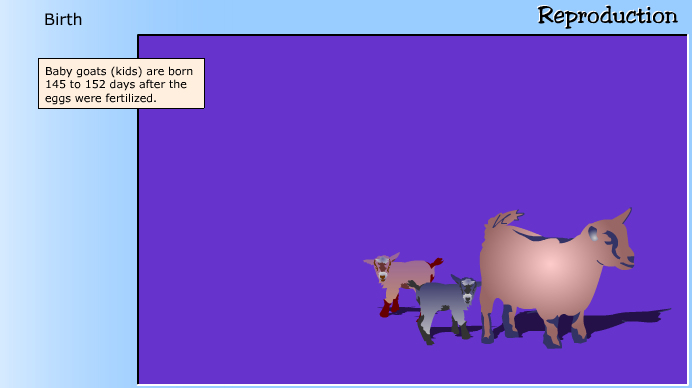The Biology of the Goat
Reproduction in the goat - The embryo
A single sperm penetrates the egg by dissolving a path through the zona pelucida,
a membrane that surrounds the egg.
As soon as a sperm enters, the surface of the egg changes so that other sperm
are blocked from penetrating.
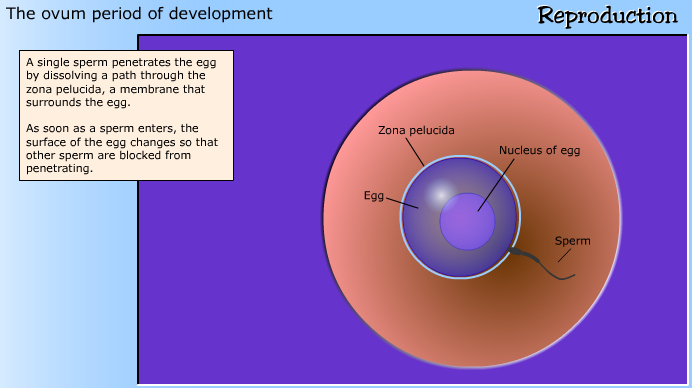
As the egg makes its way down the oviduct it goes through the early stages of development.
About 24 hours after fertliization, the single-celled egg has divided in half resulting
in two daughter cells.
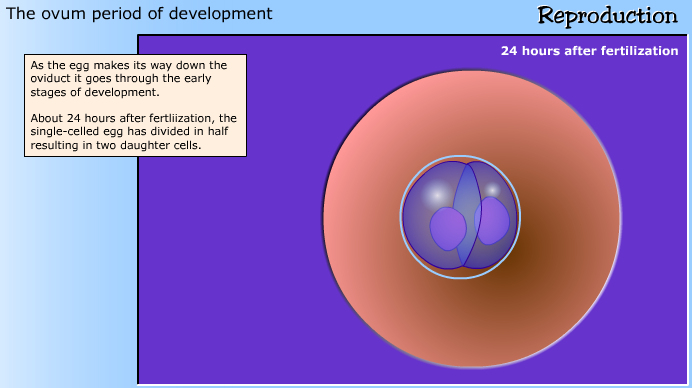
Eight hours later the ovum has divided to the four cell stage.
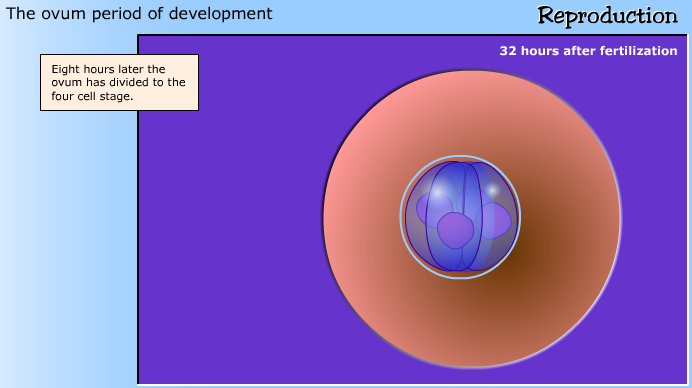
One and a half days after fertilization, the egg has divided into eight cells.
This is called the morula stage because the embryo looks like a mulberry.
The embryo now has two different ends or poles and will enter the uterus in the next day or two.

The cells divide many times producing the blastula stage by day 6 to 7 after fertilization.

A day later, the blastula hatches from the zona pelucida.
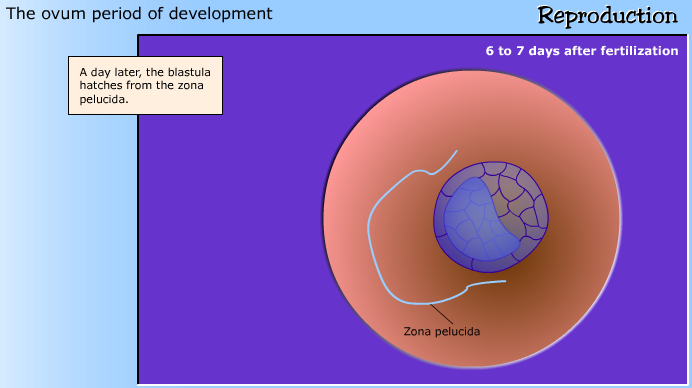
The blastocyst elongates and about 2 weeks after fertilization comes in contact with the uterine wall.
Proteins secreted by the blastocyst inhibit prostaglandin (PGF2a) secretion by the uterus.
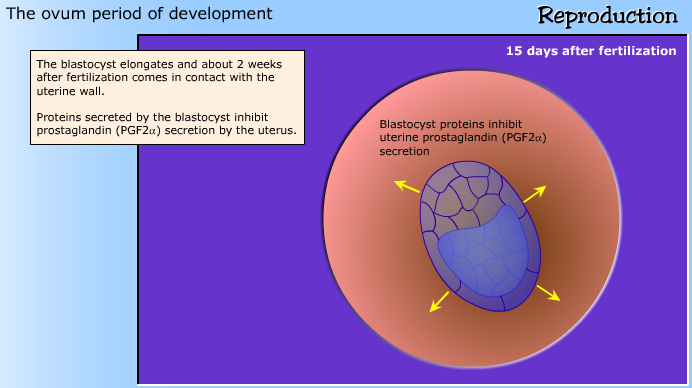
The embryonic period of development begins at about day 12 at the time the blastocyst
attaches to the lining of the uterus.
The early embryo is nourished by the fluids surrounding it.
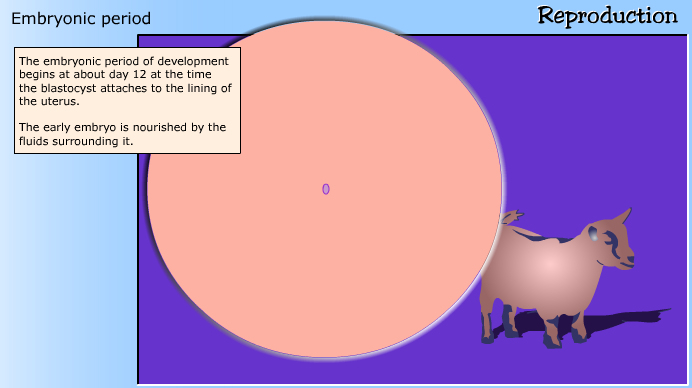
At about 20 days old the embryo's heart begins to beat.
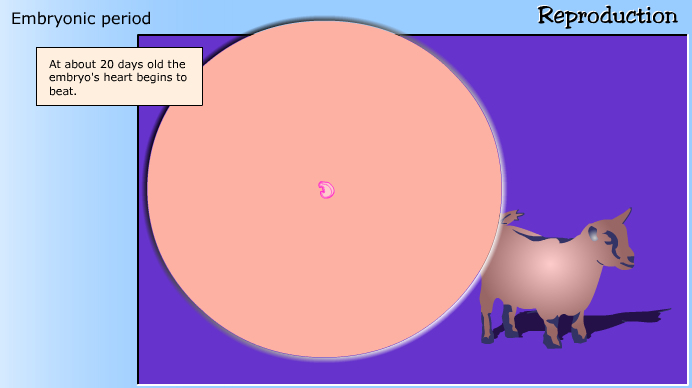
The embryo is about 1/2 inch long at 30 days old.
The late embryo receives nutrition from the mother's circulatory system across the placenta.
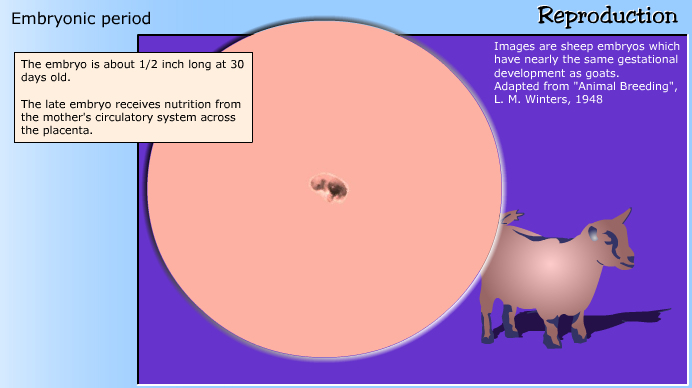
At the end of the embryonic period, at about day 42, rapid growth of the embryo has taken place.
All of the major tissue, organs and systems have been defined.
Major features of the external body are recognizable.
The 42 day old fetus is about an 1 1/2 inch long.

By day 60 the fetus is about 4 inches long. The eyes, eyelids and nostrils can be identified.

By the time the fetus is 3 months old it is about 10 inches long. Fine hair is visible on the head.

Baby goats (kids) are born 145 to 152 days after the eggs were fertilized.
